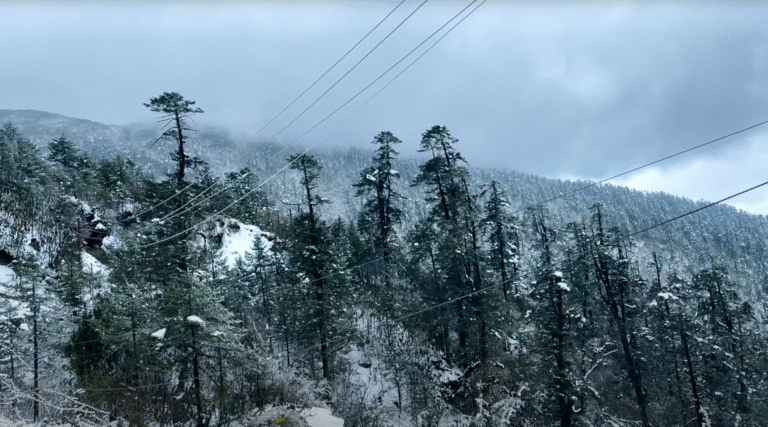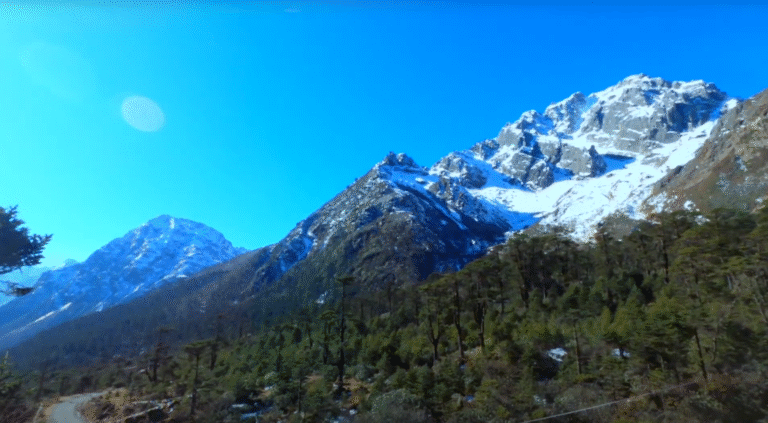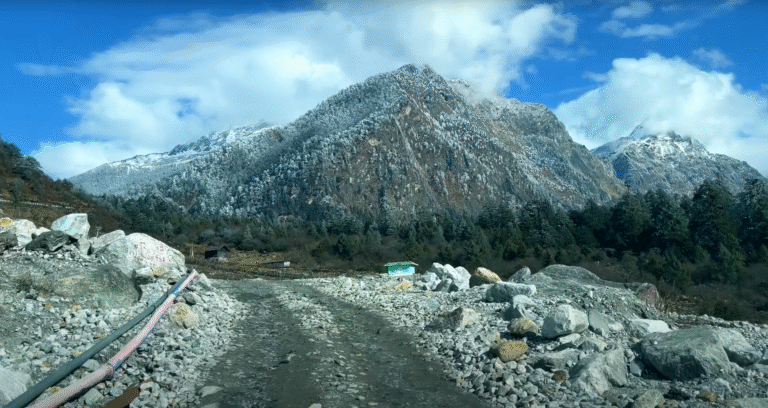Guardians of the Himalayas: Sikkim’s Wildlife and Conservation Success Story

When we picture Sikkim, India’s second-smallest state, the image that comes to mind is of snow-draped mountains, Buddhist monasteries tucked into misty hillsides, and colorful prayer flags fluttering in icy winds. But beneath this serene Himalayan beauty lies another story — one of ecological richness and forward-thinking conservation.
Sikkim has emerged as a global model for biodiversity protection and sustainable living. From becoming the world’s first fully organic farming state to ensuring that over one-third of its land is under protected status, the state has taken bold steps to preserve its natural heritage.
1. Sikkim: A Biodiversity Hotspot
Nestled in the eastern Himalayas, Sikkim may be small in size but vast in natural wealth. Covering just 7,096 square kilometers — barely 0.2% of India’s total landmass — this tiny state boasts a level of biodiversity that rivals much larger countries. The reason lies in its unique geography and climate.
Sikkim sits within the Eastern Himalayan biodiversity hotspot, one of the world’s most ecologically rich zones. Its altitude varies dramatically, from 280 meters in the subtropical valleys to over 8,500 meters at Mount Khangchendzonga, the third-highest peak in the world. This sharp gradient creates a mosaic of ecosystems: lush subtropical forests, temperate broadleaf and coniferous forests, alpine meadows carpeted with wildflowers, and icy glacial landscapes. Each of these habitats supports a different community of plants and animals, making Sikkim a living laboratory of Himalayan biodiversity.
Floral Wealth
Sikkim’s forests and meadows are a paradise for plant lovers. More than 4,500 species of flowering plants grow in this small state, a remarkable figure considering its size. The diversity is so vast that entire hillsides change colors with the seasons, offering breathtaking natural displays.
- Orchids: With around 550 species, Sikkim has earned the title of the “Orchid Paradise of India.” From delicate ground orchids to vibrant epiphytic varieties that cling to tree trunks, these flowers are prized not only for their beauty but also for their horticultural and medicinal value.
- Rhododendrons: The state is home to 36 species of rhododendrons, which bloom in dazzling reds, pinks, and whites each spring. Yumthang Valley, often called the “Valley of Flowers,” is famous for its rhododendron forests.
- Medicinal Plants: Beyond beauty, Sikkim’s plant wealth has deep cultural and medicinal significance. Indigenous communities have long used herbs like kutki, dolu, and jatamansi for traditional healing. Today, many of these plants are also studied by modern pharmacologists for their potential in treating chronic illnesses.
- High-Altitude Flora: At elevations above 4,000 meters, hardy alpine plants such as primulas, gentians, and edelweiss adapt to extreme conditions, creating colorful carpets during short summers.
This floral diversity not only sustains local traditions but also provides ecosystem services such as soil conservation, pollination, and climate regulation, making it essential to both people and the planet.
Faunal Richness
Sikkim’s varied landscapes are equally rich in animal life. For birdwatchers and wildlife enthusiasts, the state is a treasure trove.
- Birdlife: More than 550 species of birds have been recorded here, including many that are rare or threatened. The Blood Pheasant, Sikkim’s state bird, inhabits the high-altitude forests and alpine scrub. Other spectacular species include the colorful Himalayan Monal, the elusive Satyr Tragopan, and the graceful Black-necked Crane that migrates to Sikkim’s wetlands.
- Mammals: Around 150 species of mammals roam Sikkim’s forests and mountains. Among them are iconic species like the Red Panda, the shy and tree-dwelling state animal, which symbolizes the fragility of Himalayan ecosystems. The Snow Leopard, master of the high-altitude ranges, is another star resident, though sightings are rare. The forests also shelter the Himalayan Black Bear, Musk Deer, and various species of primates and smaller carnivores.
- Insects and Butterflies: Insects often go unnoticed, but in Sikkim they play a vital ecological role. The state is famous for its butterflies, including the endangered Kaiser-i-Hind, a shimmering green species that is as much a conservation symbol as the Red Panda.
These species are not only ecologically important but also culturally significant. For the people of Sikkim, wildlife is intertwined with folklore, spirituality, and identity.
A Critical Conservation Frontier
What makes Sikkim’s biodiversity truly special is how much is packed into such a small area. With rare orchids blooming in forest canopies, red pandas hiding in bamboo groves, and snow leopards prowling icy ridges, Sikkim embodies the idea of a biodiversity hotspot in miniature.
But this richness is also fragile. Climate change, habitat loss, and human activity pose constant threats. That is why Sikkim has emerged not just as a haven for wildlife but also as a critical conservation frontier, where government policies, community traditions, and global conservation efforts come together to protect one of the planet’s most extraordinary natural treasures.
2. Protected Areas and UNESCO Recognition
Sikkim may be small in size, but it sets a big example in conservation. The state has dedicated an impressive 31% of its land as protected areas, one of the highest proportions in India. These protected zones are not just patches of forest or mountains; they are carefully managed ecological sanctuaries that safeguard rare species, fragile ecosystems, and sacred landscapes. Together, they form a resilient network that ensures wildlife thrives while communities and visitors can sustainably interact with nature.
Khangchendzonga National Park: A UNESCO World Heritage Jewel
At the heart of Sikkim’s protected areas lies Khangchendzonga National Park, spanning 1,784 square kilometers — nearly 25% of the state’s landmass. Recognized by UNESCO as a Mixed World Heritage Site, the park is celebrated for its unique combination of natural wonders and cultural heritage.
Khangchendzonga is a mosaic of glaciers, alpine meadows, coniferous forests, and high-altitude streams. It is home to some of the Himalayas’ most iconic and endangered species. The Snow Leopard, the shy Himalayan Tahr, and the elusive Red Panda roam these landscapes, while rare high-altitude plants add to the park’s botanical significance.
But the park is not just about wildlife. Local communities, especially the Lepchas, consider parts of the park sacred. Many peaks, lakes, and forests are intertwined with spiritual traditions and folklore, making the park a living cultural landscape as well as an ecological one.
For nature enthusiasts and trekkers, Goecha La Trek offers a front-row seat to Khangchendzonga’s grandeur. Traversing rhododendron forests, alpine meadows, and glacial streams, visitors can witness the vibrant interplay of biodiversity and culture that makes this park globally significant.
Other Key Sanctuaries
Beyond Khangchendzonga, Sikkim hosts several important wildlife sanctuaries, each protecting unique habitats and species:
- Fambong Lho Wildlife Sanctuary: Just a short drive from Gangtok, this sanctuary is a birdwatcher’s paradise. From pheasants to raptors, Fambong Lho hosts a diverse avian population, while its trails offer serene forest trekking experiences.
- Maenam Sanctuary: Known for its medicinal plants and breathtaking viewpoints, Maenam blends ecological importance with recreational value. Dense oak forests transition into open meadows, providing habitats for a variety of mammals and birds.
- Shingba Rhododendron Sanctuary: Situated in Yumthang Valley, Shingba bursts into color between April and June when its 36 rhododendron species bloom. It is a seasonal spectacle that attracts tourists, botanists, and photographers alike.
- Kyongnosla Alpine Sanctuary: Near Tsomgo Lake, this sanctuary protects high-altitude orchids and alpine fauna. Its fragile ecosystems are crucial for preserving biodiversity at elevations where life is rare and delicate.
- Singalila Range Extension: A Red Panda stronghold, this sanctuary combines wildlife conservation with trekking opportunities. It provides vital corridors for mammals and birds while allowing visitors to experience Himalayan wildlife responsibly.
The Importance of Ecological Corridors
These protected areas do more than just exist as isolated pockets. Together, they form ecological corridors, allowing wildlife to migrate, breed, and maintain genetic diversity. This connectivity is essential for large mammals like snow leopards and red pandas, which require expansive ranges to survive. Corridors also help species adapt to seasonal changes, climate shifts, and human pressures, ensuring that populations remain resilient in the face of environmental challenges.
By protecting these habitats and linking them into functional landscapes, Sikkim demonstrates how nature, culture, and human activity can coexist in harmony. Visitors experience not just breathtaking scenery but also a tangible sense of responsibility — a reminder that conservation is a shared journey.
3. Landmark Policies & Green Credentials
Sikkim has become a global benchmark for environmental stewardship, demonstrating how a small state can lead in conservation while promoting sustainable development. Its policies integrate ecology, culture, and community livelihoods, setting it apart as one of the greenest regions in the world. Through ambitious initiatives ranging from organic farming to eco-tourism, Sikkim shows that development and conservation can coexist.
🌱 100% Organic Farming
In 2016, Sikkim made history by becoming the world’s first fully organic state. This bold step banned all chemical fertilizers and pesticides across farmlands, emphasizing natural farming methods that protect soil, water, and pollinators. The benefits are manifold: healthier crops, safer food for local communities, reduced chemical runoff into rivers, and improved biodiversity in farmland-adjacent ecosystems.
Farmers receive training and certification support from the state government, helping them transition to organic methods successfully. This policy not only safeguards the environment but also strengthens Sikkim’s identity as an eco-conscious travel destination, attracting visitors interested in sustainable food and farming practices.
🚯 Ban on Plastics
Sikkim has long been a pioneer in waste management. In 1998, the state banned single-use plastic bags, one of the earliest plastic bans in India. Over the years, restrictions expanded to packaged water in government functions and fragile high-altitude zones. The ban helps reduce pollution, protect wildlife, and preserve pristine landscapes, from Gangtok’s forests to the high Himalayan valleys. By minimizing plastic waste, Sikkim protects rivers, wetlands, and forest ecosystems from long-term ecological damage.
🐂 Ban on Grazing in Reserved Forests
To protect sensitive high-altitude ecosystems, Sikkim prohibits livestock grazing in reserved forests and protected areas. Overgrazing can degrade alpine meadows, erode soils, and threaten wildlife habitats. This policy ensures that forests and grasslands remain intact for native flora and fauna, including endangered species like the Red Panda and Himalayan Black Bear. It also supports long-term ecological balance, allowing plant communities to regenerate naturally.
🏞️ Eco-Tourism and Permit System
Tourism is carefully managed to protect sensitive ecosystems. Access to areas such as North Sikkim, Gurudongmar Lake, Nathula Pass, and Dzongu is regulated through permits. Eco-tourism policies favor homestays, community-led treks, and low-impact travel, rather than mass tourism.
This approach benefits both nature and communities. Visitors enjoy immersive experiences, while locals gain economic incentives to protect forests and wildlife. The system balances conservation with sustainable livelihoods, making Sikkim a global model for eco-friendly tourism.
4. Flagship Species Conservation
Sikkim’s conservation success is closely tied to its flagship species, animals that not only symbolize the state’s natural heritage but also serve as ecological indicators of forest and alpine health. By protecting these charismatic species, Sikkim safeguards entire ecosystems, ensuring the survival of countless other plants and animals.
🐼 Red Panda: The Forest Ambassador
The Red Panda, Sikkim’s state animal, is arguably the most iconic symbol of Himalayan conservation. This small, tree-dwelling mammal inhabits Fambong Lho, Maenam, and Singalila forests, thriving in bamboo-rich habitats. Red Pandas are highly sensitive to habitat disturbance, making them an indicator species for forest health.
Conservation initiatives focus on habitat preservation, anti-poaching patrols, and community engagement. Organizations like WWF-India and the Red Panda Network work alongside local communities to raise awareness, train forest guards, and monitor populations using camera traps. For eco-tourists, spotting a Red Panda in the wild is a rare but rewarding experience, highlighting the value of responsible trekking and habitat protection.
🐆 Snow Leopard: The Ghost of the Himalayas
High-altitude zones of Khangchendzonga National Park are home to the elusive Snow Leopard, a top predator vital for maintaining ecological balance. Its presence ensures healthy prey populations and intact mountain ecosystems.
Snow Leopard conservation involves camera-trap monitoring, conflict mitigation with herders, and landscape-level strategies to protect its habitat from fragmentation. Local herders are educated on coexistence techniques, reducing the risk of livestock predation while preserving predator populations. For nature enthusiasts, learning about Snow Leopards emphasizes how species protection and human communities can coexist.
🦌 Musk Deer and Himalayan Black Bear: Guardians of the Forest
Sikkim also protects species like the Musk Deer and Himalayan Black Bear, both listed under India’s Wildlife Protection Act. These mammals face threats from poaching, habitat loss, and human encroachment. Conservation measures include anti-poaching patrols, habitat restoration, and community awareness programs. Protecting these species ensures forest ecosystems remain balanced, supporting smaller mammals, birds, and plants.
🦅 Avian Conservation: Birds of the Himalayas
Birds form an essential component of Sikkim’s biodiversity. The state serves as a migration corridor for Himalayan and Indo-Chinese birds, supporting both resident and migratory populations. Bird sanctuaries, regular surveys, and habitat management programs protect species such as the Blood Pheasant, Satyr Tragopan, and Black-necked Crane. For birdwatchers, Sikkim offers a unique opportunity to witness rare species while learning about ecosystem connectivity and migratory patterns.
A Holistic Approach to Wildlife Protection
Sikkim’s flagship species programs go beyond individual animals. By focusing on charismatic wildlife like the Red Panda and Snow Leopard, the state simultaneously preserves forests, alpine meadows, rivers, and wetlands. Community involvement is central: locals benefit economically from eco-tourism and conservation programs, creating shared responsibility for protecting wildlife.
Traveler Tip: When trekking in Sikkim’s sanctuaries, respect wildlife habitats, stick to marked trails, and support community-run eco-tourism initiatives. Your responsible actions help conserve these flagship species for future generations.
In Sikkim, flagship species are not just symbols—they are living ambassadors for conservation, connecting communities, tourists, and policymakers in a shared mission to protect one of the Himalayas’ richest natural landscapes.
5. Community and Cultural Conservation
Sikkim’s approach to conservation goes beyond protecting forests and wildlife—it actively integrates local communities and cultural traditions into environmental stewardship. The state recognizes that sustainable conservation is only possible when people, culture, and nature coexist harmoniously, making Sikkim a global example of inclusive environmental governance.
🌾 Indigenous Knowledge and Traditional Practices
Local communities, particularly the Lepchas, Bhutias, and Nepalese, have lived in harmony with Sikkim’s ecosystems for centuries. Their traditional knowledge guides sustainable resource management, from forest use to medicinal plants, and has become an essential part of modern conservation strategies.
- Sacred Groves and Forest Protection: Many forests in Sikkim are considered sacred, known as “Demajong” by the Lepchas. These sacred groves act as natural biodiversity reserves, where hunting and logging are prohibited, allowing flora and fauna to thrive.
- Sustainable Agriculture: Indigenous farming practices, combined with Sikkim’s 100% organic policy, ensure soil fertility, water conservation, and protection of pollinators. These practices minimize environmental impact while supporting local livelihoods.
🛖 Community-Led Eco-Tourism
Sikkim’s eco-tourism programs are designed to benefit local communities while minimizing environmental impact. Homestays, guided nature walks, and village-based trekking experiences provide income to rural families, encouraging them to protect forests and wildlife rather than exploit them unsustainably.
- Dzongu and North Sikkim: Permit-based access ensures that sensitive zones are visited responsibly. Local guides educate tourists about flora, fauna, and cultural heritage.
- Sustainable Trekking Programs: Community-led treks follow low-impact principles, such as avoiding litter, using reusable utensils, and supporting local eateries. These initiatives create a direct link between tourism and conservation.
Cultural Festivals as Conservation Platforms
Sikkim’s festivals are more than celebrations—they reinforce ecological awareness. Festivals like Losar (Tibetan New Year) and Lhochhar (Lepcha New Year) involve rituals that honor mountains, rivers, and forests, reminding communities of their dependence on healthy ecosystems.
- During these festivals, tree planting drives, clean-up campaigns, and awareness programs are often conducted, blending culture with environmental action.
- Folk songs, dances, and storytelling pass down lessons about wildlife protection and forest stewardship to younger generations, ensuring that conservation values remain embedded in local culture.
Integration of Policy and Community Action
Sikkim’s policies, from organic farming to protected areas, are designed to empower communities rather than exclude them. Local Forest Protection Committees, volunteer patrolling, and eco-tourism cooperatives give residents ownership over conservation outcomes. By involving communities in monitoring wildlife, managing waste, and regulating tourism, Sikkim ensures that conservation efforts are sustainable and socially inclusive.
A Model for Sustainable Conservation
By integrating culture, community, and nature, Sikkim demonstrates that conservation is more than protection—it is a way of life. Locals are not passive beneficiaries; they are active guardians of biodiversity, combining spiritual beliefs, traditional knowledge, and modern policies. Tourists and researchers visiting Sikkim witness this unique interplay, learning that preserving culture and ecosystems together strengthens both.
Traveler Tip: Participate in village treks, visit homestays, and attend cultural festivals to experience conservation in action while supporting local communities.
Sikkim’s model shows that people-centered conservation is not just effective—it is essential for sustaining fragile mountain ecosystems for generations to come.
6. NGOs, Research, and Monitoring Programs
Sikkim’s success in wildlife and ecosystem conservation is the result of collaborative efforts between government bodies, NGOs, research institutes, and local communities. These organizations bring expertise, resources, and local knowledge to ensure that the state’s unique biodiversity is preserved for future generations.
WWF-India: Red Panda and High-Altitude Conservation
The World Wide Fund for Nature (WWF-India) has been instrumental in protecting Sikkim’s flagship species, particularly the Red Panda. Programs focus on habitat restoration, anti-poaching patrols, and community awareness campaigns. WWF also supports conservation in high-altitude zones, monitoring species like the Snow Leopard and Himalayan Tahr, and helping local communities adopt sustainable practices that reduce human-wildlife conflict.
State Biodiversity Board: SBSAP Implementation
The Sikkim State Biodiversity Board (SSBB) manages the Sikkim State Biodiversity Action Plan (SBSAP), which serves as a roadmap for preserving the state’s rich ecosystems. The plan identifies priority habitats, assesses threats, and develops strategies to protect both flora and fauna. By coordinating with local communities and NGOs, the SSBB ensures that conservation actions are science-based, legally backed, and culturally sensitive.
Local NGOs and Community Engagement
Several local NGOs play a vital role in grassroots conservation. They conduct awareness campaigns, eco-tourism initiatives, and workshops, educating residents about sustainable practices and the importance of biodiversity. Programs often include community treks, wildlife education sessions, and clean-up drives, enabling villagers and tourists to actively participate in protecting forests, rivers, and wildlife habitats.
Research Institutes and Monitoring Programs
Academic and research institutions in Sikkim conduct extensive floristic surveys, climate studies, and ecological monitoring, providing data critical for informed policy-making. Camera-trap monitoring of mammals like the Red Panda, Snow Leopard, and Himalayan Black Bear allows scientists to track population trends, study behavior, and identify threats. Research on high-altitude vegetation and bird populations helps evaluate ecosystem health, particularly in the face of climate change.
Science-Driven Conservation
By combining NGO initiatives, government planning, community engagement, and research-based monitoring, Sikkim has established a robust, science-driven conservation framework. This collaborative approach not only protects endangered species and fragile ecosystems but also empowers local communities to become active stewards of the environment. Together, these programs ensure that Sikkim remains a model for holistic, sustainable conservation in the Himalayas.
7. Challenges and Threats
Sikkim has earned global recognition for its biodiversity and conservation efforts, yet the state faces several persistent ecological challenges. These threats, arising from both natural processes and human activities, underscore the need for adaptive management, community engagement, and science-driven strategies to safeguard fragile Himalayan ecosystems.
🌡 Climate Change: Melting Glaciers and Shifting Habitats
Climate change is perhaps the most critical long-term threat. Glaciers in the Khangchendzonga region are retreating, affecting downstream water availability and disrupting freshwater ecosystems. Altered rainfall patterns increase the risk of landslides, soil erosion, and flooding, while rising temperatures are causing species to move to higher altitudes, compressing their habitats and intensifying competition. Sensitive alpine plants, such as medicinal herbs, and high-altitude fauna like the Snow Leopard and Himalayan Tahr are particularly vulnerable.
Mitigation strategies include glacier monitoring, climate-resilient forest management, and conservation corridors that allow species to shift habitats safely.
🏞 Tourism Pressure: Fragile Zones at Risk
Tourism drives Sikkim’s economy but also threatens ecosystems. High-altitude destinations like Gurudongmar Lake, Yumthang Valley, and Nathula Pass experience overcrowding, waste accumulation, and vegetation damage. Despite permit-based access and eco-tourism policies, the rising number of visitors can stress fragile habitats.
Solutions involve stricter visitor limits, eco-friendly accommodations, visitor education programs, and community-led clean-up initiatives to minimize environmental impact.
🏗 Infrastructure Development: Habitat Fragmentation
Sikkim’s rapid infrastructure expansion, including hydropower projects, roads, and tunnels, fragments forests and disrupts wildlife corridors. Construction activities also trigger landslides, soil erosion, and sedimentation in rivers, directly affecting flora, fauna, and local communities. Species such as the Red Panda and Musk Deer are particularly sensitive to habitat fragmentation.
Mitigation approaches include wildlife-friendly road design, careful site selection for hydropower projects, and environmental impact assessments to balance development with conservation.
🐻 Human-Wildlife Conflict
With increasing human-wildlife overlap, conflicts such as crop raiding by Himalayan Black Bears and livestock predation by leopards are common. These conflicts threaten livelihoods and sometimes lead to retaliatory killings, undermining conservation efforts.
Community-based solutions include predator-proof livestock enclosures, compensation schemes for crop and livestock losses, and awareness programs promoting coexistence between humans and wildlife.
🔬 Data Gaps: Unstudied Species
While Sikkim has extensive research on flagship species and forests, many groups remain understudied, particularly insects, amphibians, and rare plants. This lack of data hampers conservation planning and limits understanding of ecological dynamics.
Addressing these gaps requires long-term ecological monitoring, citizen science initiatives, and collaboration with universities and research institutions to generate actionable data for policy-making.
8. Lessons and Global Significance
Sikkim’s conservation journey offers valuable insights that can guide environmental strategies worldwide. Despite its small size, the state demonstrates how integrated, community-centered approaches can achieve remarkable ecological outcomes.
🌱 Integrating Policy Coherence
One key lesson is the importance of policy integration. Sikkim combines 100% organic farming, strict plastic bans, and eco-tourism regulations into a cohesive framework that benefits both people and nature. This holistic approach ensures that conservation efforts are mutually reinforcing rather than isolated, creating a resilient environmental system. Countries and regions can replicate this model by aligning agricultural, tourism, and waste management policies with biodiversity goals.
🛖 Using Cultural Traditions as Conservation Tools
Sikkim illustrates that local culture and traditional knowledge are powerful conservation instruments. Sacred groves, ritual-based forest protection, and indigenous practices ensure sustainable use of natural resources while fostering a deep community ethic of stewardship. Integrating cultural values into environmental strategies can enhance compliance, strengthen community ownership, and preserve both biodiversity and heritage simultaneously.
🏞 Leveraging UNESCO Recognition
Recognition of Khangchendzonga National Park as a UNESCO World Heritage Site has mobilized global attention, funding, and technical support for Sikkim’s conservation initiatives. This demonstrates how international acknowledgment can amplify local efforts, attract eco-tourism responsibly, and provide leverage for policy enforcement and research collaborations.
🌍 Small States, Global Impact
Sikkim proves that even small regions can lead global sustainability movements. Through innovation, governance, and community participation, the state has become a model for environmental stewardship, inspiring other regions to adopt ambitious policies without waiting for large-scale national mandates.
By integrating policy, culture, science, and community, Sikkim shows that effective conservation is achievable anywhere, offering a blueprint for regions facing similar ecological and developmental challenges.
9. Recommendations for the Future
While Sikkim has achieved remarkable success in biodiversity conservation, experts recommend several measures to enhance long-term ecological resilience and ensure sustainable coexistence between people and nature.
🔬 Expand Biological Monitoring
Despite extensive research on flagship species, many groups, including insects, amphibians, and rare plants, remain understudied. Expanding long-term monitoring programs using techniques like camera traps, ecological surveys, and citizen science initiatives will provide data essential for informed management and adaptive conservation strategies.
🌡 Integrate Climate Adaptation
With glaciers melting and rainfall patterns shifting, climate change poses a serious threat to Sikkim’s ecosystems. Integrating climate-resilient strategies into park management—such as habitat restoration, corridor creation, and water resource management—will help species adapt to changing conditions and reduce ecosystem vulnerability.
🐻 Strengthen Human-Wildlife Conflict Mitigation
Conflicts like crop raiding by bears and livestock predation by leopards continue to challenge conservation. Implementing insurance schemes, predator-proof corrals, and community awareness programs can reduce losses, promote coexistence, and foster local support for wildlife protection.
🏗 Enforce Stricter Environmental Assessments
Infrastructure projects, including roads and hydropower developments, can fragment habitats and disrupt wildlife. Conducting rigorous environmental impact assessments before approvals will ensure projects are sustainable and minimize ecological damage.
💚 Develop Payment for Ecosystem Services
Rewarding local communities for conservation through payments for ecosystem services (PES), such as protecting forests, water sources, and biodiversity, can strengthen community stewardship, incentivize sustainable practices, and support livelihoods.
By adopting these recommendations, Sikkim can enhance resilience, protect biodiversity, and sustain its role as a global model for conservation and sustainability.
Conclusion
Sikkim stands today as a rare example of how development and conservation can move hand in hand. Its journey — from declaring itself India’s first fully organic state to safeguarding nearly one-third of its land as protected forests — shows what’s possible when policy, community, and culture align with nature’s rhythms.
By protecting flagship species like the Red Panda and Snow Leopard, nurturing sacred landscapes, and empowering local communities through eco-tourism, Sikkim has built a model that resonates far beyond its Himalayan borders. The state reminds us that conservation is not a luxury but a necessity for survival, especially in a world grappling with climate change and biodiversity loss.
For travelers, researchers, and policymakers alike, Sikkim is more than just a destination — it is an inspiration. It demonstrates that small regions with strong vision can lead global sustainability movements. As we look to the future, Sikkim’s example urges us to rethink our relationship with nature, making sure that the forests remain alive, the rivers pure, and the mountains timeless — for generations yet to come….



